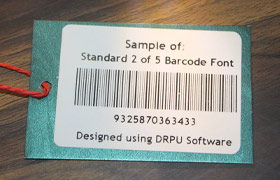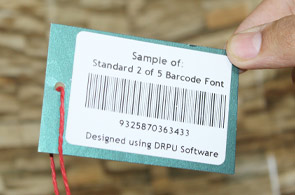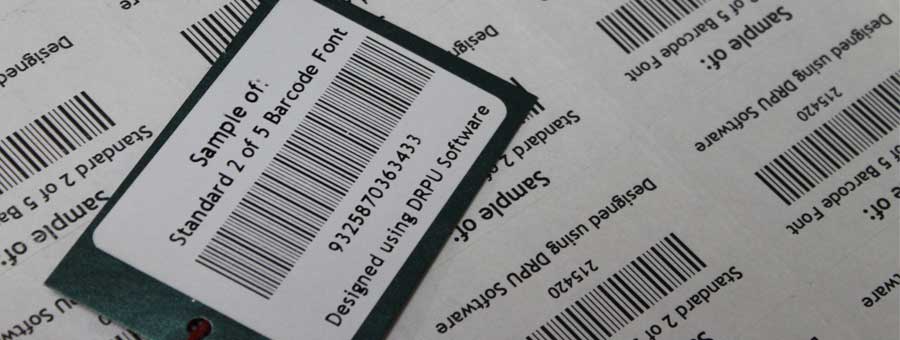| Published Date: 18/05/2023
In this article, we will provide an overview of the Standard 2 of 5 barcode, including its history, structure, and applications.
History
-
The Standard 2 of 5 barcode was developed by Intermec Corporation in the 1960s as a low-cost alternative to other barcoding systems that were available at the time. The barcode was initially designed to be used in the manufacturing industry to track the movement of materials and finished products.
-
In the decades since its development, the Standard 2 of 5 barcode has become widely adopted in a variety of industries, including healthcare, logistics, and retail. While it has largely been superseded by newer barcode technologies such as Code 128 and GS1-128, it is still used in certain applications where its simplicity and small size are advantageous.
Structure
-
The Standard 2 of 5 barcode consists of a series of alternating wide and narrow bars, with each character represented by a unique pattern of five bars. The barcode is self-checking, meaning that it contains redundancy to help ensure that it is read correctly.
-
The barcode can encode numeric data only, with each character represented by two bars and three spaces. The two bars in each character can be either wide or narrow, with the width of the bars and spaces determined by the specific symbology used.
-
The Standard 2 of 5 barcode has several different variations, including Interleaved 2 of 5 and Matrix 2 of 5. Interleaved 2 of 5 is a variation that allows for the encoding of an even number of digits, while Matrix 2 of 5 is a variation that allows for the encoding of both numeric and alphabetic characters.
Standard 2 of 5 Barcode Different From Other Barcode Types
Barcodes are a common method of storing and transmitting data, and there are many different types of barcodes available. Each type of barcode has its own unique set of features and characteristics that make it suitable for different applications. In this article, we will explore the differences between Standard 2 of 5 barcodes and other types of barcodes.
Standard 2 of 5 Barcode
Standard 2 of 5 barcode, also known as Industrial 2 of 5 or Code 25, is a numeric-only format that consists of alternating wide and narrow bars, with each character represented by five bars. The barcode is widely used in various industries due to its simplicity and small size. However, it has limitations in terms of data capacity and requires a high level of accuracy when reading.
-
1D vs. 2D Barcodes: The most significant difference between Standard 2 of 5 barcode and other types of barcodes is that it is a 1D barcode, meaning that it stores data in a linear format. In contrast, 2D barcodes, such as QR codes, can store much more data in a smaller space by using a matrix of dots or squares.
-
Reading Distance and Angle: Standard 2 of 5 barcode requires a high level of accuracy when reading, which means that it can only be read at a close range and from a specific angle. This can be a disadvantage in applications where the barcode needs to be read from a distance, such as in the case of shipping.
-
Application-Specific: Standard 2 of 5 barcode is often used in specific applications where a simple and small barcode is sufficient. However, it may not be suitable for applications where more data needs to be stored or where the barcode needs to be read from a distance.
-
Data Capacity: Due to its linear format, Standard 2 of 5 barcode has a limited data capacity compared to 2D barcodes. Standard 2 of 5 barcode can only store up to 14 numeric characters, whereas 2D barcodes can store up to several hundred characters.
Other Types of Barcodes
-
UPC Barcodes: Universal Product Code (UPC) barcodes are widely used in the retail industry to track products and sales. The barcode consists of a series of vertical bars and spaces that represent a unique product code. UPC barcodes are 1D barcodes and can only store up to 12 numeric digits.
-
Code 128 Barcodes: Code 128 barcodes are a high-density barcode that can store alphanumeric characters. The barcode consists of both bars and spaces of varying widths, with each character represented by a specific pattern. Code 128 barcodes are 1D barcodes and can store up to 128 characters.
-
QR Codes: Quick Response (QR) codes are a 2D barcode that can store a large amount of data in a small space. The barcode consists of a matrix of black and white squares, with each square representing a binary digit. QR codes can store up to several hundred characters and can be read from a distance.
-
Data Matrix Barcodes: Data Matrix barcodes are another 2D barcode that can store a large amount of data in a small space. The barcode consists of a matrix of black and white squares, with each square representing a binary digit. Data Matrix barcodes can store up to several thousand characters and can be read from a distance.
-
PDF417 Barcodes: PDF417 barcodes are a 2D barcode that can store a large amount of data in a small space. The barcode consists of both bars and spaces of varying widths, with each character represented by a specific pattern. PDF417 barcodes can store up to several thousand characters.


